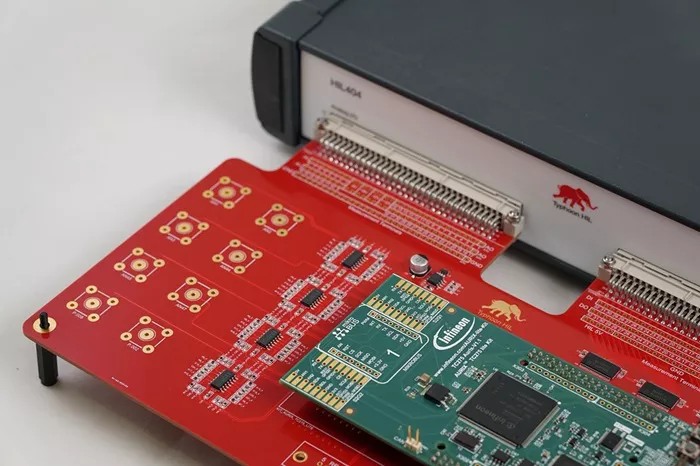Infineon Technologies, a leading German semiconductor company, has partnered with Typhoon HIL, a specialist in hardware-in-the-loop (HIL) simulation, to support faster development and testing of electric vehicle (EV) powertrain systems.
The collaboration gives automotive engineers a real-time, fully integrated platform to develop and test key EV components. These include motor drives, on-board chargers, battery management systems (BMS), and other power electronics.
Customers using Infineon’s AURIX TC3x and TC4x automotive microcontrollers can now take advantage of Typhoon HIL’s simulation tools. The system features high-fidelity emulation capabilities and connects directly via a plug-and-play interface using the Infineon TriBoard Interface Card.
The solution includes Typhoon’s real-time HIL Simulators, testing hardware and software tools, and the TriBoard Interface Card. This card supports both AURIX TC3xx and TC4xx evaluation boards and connects directly through standard DIN41612 connectors on the front of the simulator.
This setup helps speed up design and testing, reduces development costs, and simplifies validation workflows for customers.
Typhoon HIL is also offering an Automotive Communication Extender for its simulators. Built on the AURIX TC3xx processor, this extender allows engineers to test a wider range of electronic control units (ECUs) using common communication protocols like CAN, CAN FD, LIN, and SPI.
“Developers of EV components—such as motor drives, battery systems, and chargers—are increasingly using Controller Hardware-in-the-Loop (C-HIL) alongside simulation tools,” said Christopher Thibeault, Director of Partnership & Ecosystem Management Automotive Americas at Infineon. “With this new environment, our AURIX customers can design, test, and bring reliable automotive solutions to market more quickly.”

